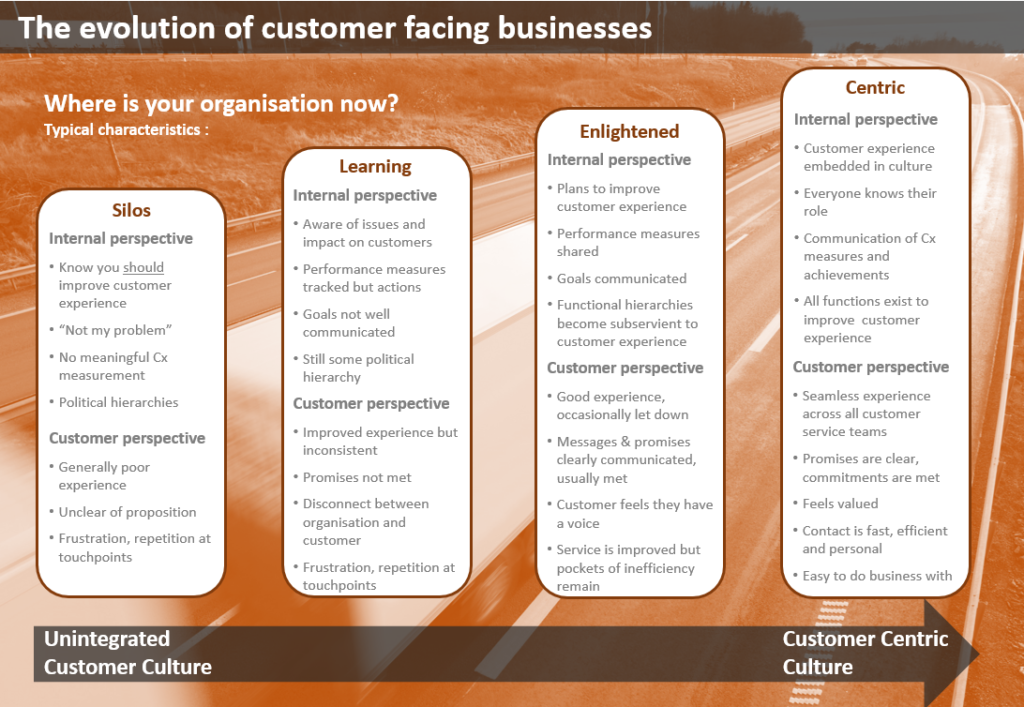You can differentiate your organisation from the competition by delivering an experience that puts the customer at the heart. A customer-centric culture delivers tangible benefits, from improvements in customer retention and loyalty, to reduced costs and increased revenue.
What does a customer-centric organisation look like?
In a customer centric organisation, everyone is driving towards the same shared goal: making the customer experience exemplary. With the customer at the heart of their culture, such organisations do everything to simplify processes, empower employees, and deliver on their promises. They do this through:
- Leadership: Communication and resources from the most senior people in a business which reinforces that good customer experience is essential.
- Responsibility: Whether part of an internal or external facing department, employees are given ownership and responsibility for solving customer issues.
- Co-operation: silos and demarcations are overcome, so that inter-departmental understanding and co-operation become part of the culture.
External facing departments with direct customer interaction, such as contact centres and sales and marketing teams, generally have a good customer understanding (though it isn’t a given!). From an external perspective, a customer centric organisation tends to mean:
- There is seamless experience across all customer service teams
- Contact is fast, efficient, and personal
- Promises are clear and commitments are met
- Customers feel valued
- You are easy to do business with
For internally focused departments with limited or no customer interaction, such as finance, IT, HR, and operations, a customer-centric organisation tends to mean:
- Customer experience is embedded in the organisation culture
- Everyone knows their role in delivering an exemplary customer experience
- Effective communication of customer experience measures and achievements throughout the organisation
- All functions exist to improve customer experience
How to become more customer-centric
The journey to become a customer centric organisation is not a quick or easy one; reaching the utopia of the ideal customer centric business may be long road. However, any action that leads to a more centric approach can have profound effect on customers and ultimately the success of your business.
To improve customer experience, an organisation first needs to evaluate where it is on the 4-stage customer centric scale:

Typical organisation structures can hinder moving along this scale. In many departmental businesses, there is a lack of interaction with other departments, lack of understanding of their objectives, or interdepartmental competition
For those at the bottom of the scale, with a silo mentality, there are several issues that undermine their customer experience:
- Customer issues are passed ‘around the houses’ with no department making it their responsibility
- Promises aren’t delivered in accordance with promotions or advertising from other departments
- Blame culture where departments shift the brunt of poor customer experience elsewhere
- Complex experiences due to the inability to fully solve a customer’s problem first time around
- Inconsistent customer touchpoints and mixed messaging
- Poor customer retention and loyalty
It is therefore essential for company culture and leadership to embrace and encourage collective sharing and understanding of objectives between departments.
Our bespoke Customer Experience programmes give insight and clear prioritisation to make your organisation more customer centric.
For advice or to discuss your organisation’s priorities, please get in touch today to speak to one of our team.